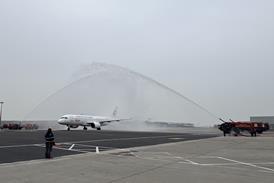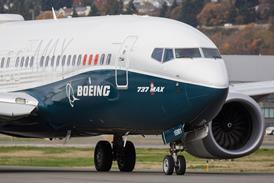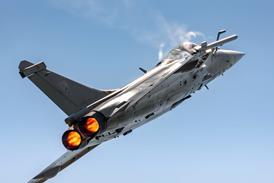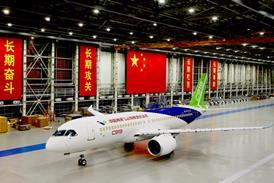Sikorsky is continuing to grow despite the economic downturn. Vice-president commercial programmes Marc Poland says no part of the company's business is showing any signs of the presaged downturn. "I could not predict that the situation will remain the same", he says, but all the company's business indicators at present - civil and military - suggest continuing growth.
Poland cites as evidence the resurgence of popularity of the current versions of the 30-year-old S-76 series aircraft, which is still being developed. Over its lifetime, he says, the average output rate of the type has been about 15 a year, but Sikorsky is now producing one S-76C a week, and it is popular in multiple roles from VIP transport through oil support to search and rescue.
 |
|---|
Sikorsky is expanding its manufacturing for the S-76 fuselage beyond its present production base in the Czech Republic to Changhe in China this year, says Poland. Meanwhile, the S-76D variant, still on track to fly for the first time by the end of the year, will incorporate many advances, which include a "future-proof" Thales Top Deck flightdeck avionics suite to replace the marque's existing Honeywell cockpit a new Pratt & Whitney Canada PW210S engine and what Poland describes as "fourth-generation aerodynamics" pure composite rotor blades - fully ice-protected - that produce 200kg (440lb) more lift from the same power. Sikorsky says it already has 100 orders for the new variant.
On the more radical development front, Poland describes the fly-by-wire controlled variant of its S-92 series - the S-92F - as "a certification exercise". It has racked up 20h of FBW flying since its first flight in December last year, he says.
 |
|---|
The first market for the type is expected to be the military because of the exceptional stability and easy handling it would bring to high workload missions. The FBW will also bring "potential improvements on weight, power, and reliability," he says, adding that the weight advantage depends on what levels of back-up the regulators will demand for certification. Compared with the existing S-92 the aircraft will also have an increased rotor diameter.
Sikorsky's experimental FBW X2 coaxial twin-rotor high-speed helicopter has much further to go on the development ladder, and the company is preparing a technology demonstrator. Poland says the programme is now being paid for entirely by Sikorsky, but it hopes for military research and development funds if the demonstration delivers good results.
It will be an expensive aircraft, says Poland, and whether it becomes commercially viable "depends on how much people are prepared to pay for an extra 100kt [185km/h]". The company is aiming at a 250kt cruising speed, and both the military and civil market will have to be convinced before the project becomes viable, he says.
Source: Flight International























